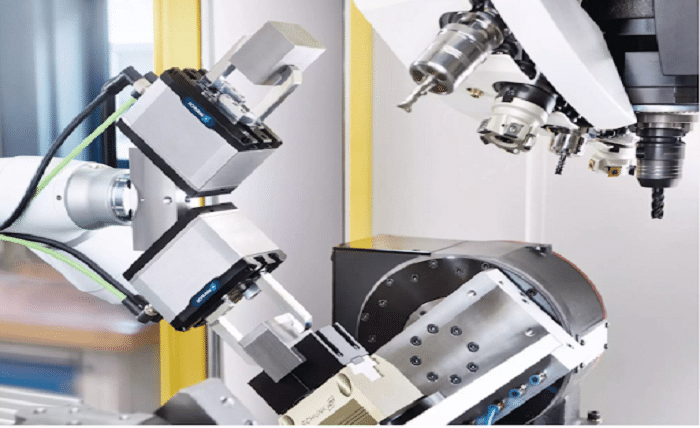The role of a Technology Transfer Office (TTO) is pivotal in bridging the gap between academia and industry, especially in collaborative research. This blog post will explore the main function of a Technology Transfer Office concerning collaborative research, detailing how it facilitates innovation, protects intellectual property, and promotes the commercialization of research outcomes.
What is a Technology Transfer Office (TTO)?
A Technology Transfer Office (TTO) is a specialized entity within universities, research institutions, and corporations. Its primary function is to manage the transfer of technology and intellectual property from research environments to the marketplace. In the context of collaborative research, a TTO plays a crucial role in ensuring that the outcomes of joint projects are effectively utilized and commercialized.
The Role of a TTO in Collaborative Research
The main function of a Technology Transfer Office in collaborative research involves several key activities:
- Facilitating Partnerships: TTOs help establish and manage partnerships between academic researchers and industry partners.
- Negotiating Agreements: They negotiate and draft research collaboration agreements, ensuring that all parties’ interests are protected.
- Managing Intellectual Property: TTOs handle the protection and management of intellectual property (IP) arising from collaborative research.
- Promoting Commercialization: They work to commercialize research outcomes, turning innovations into marketable products and services.
Facilitating Research Collaborations
One of the primary functions of a Technology Transfer Office in collaborative research is to facilitate partnerships between academia and industry. TTOs identify potential partners, arrange meetings, and help establish research projects that leverage the strengths of both parties. By doing so, they ensure that collaborative research is well-coordinated and productive.
Negotiating Research Agreements
Negotiating research agreements is another critical function of a Technology Transfer Office. These agreements outline the terms and conditions of the collaboration, including the division of responsibilities, funding arrangements, and intellectual property management. By carefully drafting these agreements, TTOs protect the interests of all involved parties and provide a clear framework for the research project.
Intellectual Property Management
The management of intellectual property is a core responsibility of a Technology Transfer Office. In collaborative research, multiple parties may contribute to creating new IPs. A TTO ensures that this IP is properly documented, and protected through patents or other means and that ownership rights are clearly defined. This helps prevent disputes and ensures that all contributors are fairly recognized.
Promoting Commercialization of Research Outcomes
A key function of a Technology Transfer Office is to promote the commercialization of research outcomes. TTOs work to identify potential market applications for new technologies and innovations developed through collaborative research. They assist in licensing agreements, the formation of spin-off companies, and other commercialization strategies that bring research results to market.
Ensuring Compliance and Legal Protection
Ensuring compliance with legal and regulatory requirements is another essential function of a Technology Transfer Office. In collaborative research, TTOs ensure that all activities comply with applicable laws and regulations, such as IP protection, data privacy, and ethical standards. They also provide legal protection for the institution’s interests in the collaboration.
Supporting Funding and Grant Applications
Technology Transfer Offices also support researchers in obtaining funding and grants for collaborative projects. They help identify funding opportunities, assist in the preparation of grant proposals, and ensure that the proposals align with the strategic goals of the institution. By securing funding, TTOs enable collaborative research to thrive and achieve its objectives.
Facilitating Knowledge Transfer and Training
Facilitating knowledge transfer and providing training is another important function of a Technology Transfer Office. TTOs organize workshops, seminars, and training sessions to educate researchers and industry partners about IP management, commercialization strategies, and collaborative research best practices. This helps build capacity and ensures that all parties are well-equipped to engage in successful collaborations.
Monitoring and Evaluating Research Impact
Monitoring and evaluating the impact of collaborative research is a crucial function of a Technology Transfer Office. TTOs track the progress of research projects, assess their outcomes, and measure their impact on society and the market. This evaluation helps inform future research strategies and ensures that collaborations are achieving their intended goals.
Building a Culture of Innovation
Finally, a Technology Transfer Office plays a key role in building a culture of innovation within the institution. By promoting the importance of technology transfer and encouraging researchers to engage in collaborative projects, TTOs help foster an environment where innovation can thrive. This culture of innovation is essential for the long-term success of collaborative research efforts.
Conclusion
In conclusion, the main function of a Technology Transfer Office concerning collaborative research is to facilitate partnerships, manage intellectual property, promote commercialization, ensure compliance, support funding, facilitate knowledge transfer, monitor research impact, and build a culture of innovation. By performing these functions, TTOs play a vital role in bridging the gap between academia and industry, turning research into tangible benefits for society.
FAQ
1. What is a Technology Transfer Office (TTO)?
A Technology Transfer Office (TTO) is a specialized entity within research institutions that manages the transfer of technology and intellectual property from research to the marketplace.
2. How does a TTO facilitate collaborative research?
A TTO facilitates collaborative research by establishing partnerships, negotiating agreements, managing intellectual property, and promoting the commercialization of research outcomes.
3. What is the role of a TTO in intellectual property management?
A TTO manages the documentation, protection, and ownership of intellectual property arising from collaborative research, ensuring that all contributors are fairly recognized.
4. How does a TTO promote the commercialization of research outcomes?
A TTO identifies market applications for new technologies, assists in licensing agreements, and supports the formation of spin-off companies to bring research results to market.
5. Why is building a culture of innovation important for a TTO?
Building a culture of innovation encourages researchers to engage in collaborative projects and promotes the importance of technology transfer, which is essential for the long-term success of research efforts.





